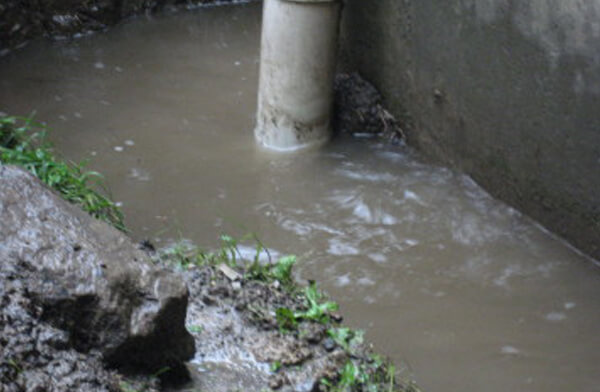Exactly how to Examine If Your Residence Has a Hidden Leakage
Exactly how to Examine If Your Residence Has a Hidden Leakage
Blog Article
This post below about Finding hidden leaks is unquestionably fascinating. Give it a go and make your own conclusions.

Early discovery of leaking water lines can minimize a possible catastrophe. Some tiny water leaks might not be noticeable.
1. Check Out the Water Meter
Every house has a water meter. Examining it is a surefire manner in which assists you uncover leakages. For beginners, turn off all the water sources. Ensure nobody will flush, make use of the faucet, shower, run the cleaning device or dishwasher. From there, most likely to the meter and watch if it will certainly change. Given that no one is utilizing it, there should be no motions. If it relocates, that suggests a fast-moving leakage. Likewise, if you find no changes, wait an hour or more and also check back once more. This indicates you might have a slow leakage that could also be below ground.
2. Check Water Intake
Analyze your water expenses and track your water usage. As the one paying it, you must see if there are any inconsistencies. If you identify sudden changes, regardless of your usage coinciding, it suggests that you have leakages in your plumbing system. Remember, your water bill should fall under the same range each month. An abrupt spike in your bill suggests a fast-moving leak.
Meanwhile, a stable increase every month, even with the same habits, reveals you have a slow-moving leakage that's additionally gradually intensifying. Call a plumber to extensively examine your home, especially if you really feel a cozy area on your floor with piping below.
3. Do a Food Coloring Examination
When it comes to water consumption, 30% comes from commodes. If the color somehow infiltrates your dish during that time without flushing, there's a leakage between the container and dish.
4. Asses Exterior Lines
Do not forget to check your outside water lines also. Examination spigots by attaching a garden hose. Should water permeate out of the link, you have a loose rubber gasket. Change this as well as ensure all connections are limited. If you've obtained a sprinkler system, it will aid get it professionally took a look at and kept every year. One tiny leak can lose tons of water and increase your water expense.
5. Examine and also Evaluate the Scenario
Homeowners should make it a habit to check under the sink counters as well as also inside closets for any kind of bad odor or mold growth. These two red flags suggest a leakage so punctual focus is needed. Doing regular evaluations, even bi-annually, can save you from a major issue.
Examine for discolorations and weakening as most pipelines as well as home appliances have a life expectancy. If you suspect leaking water lines in your plumbing system, don't wait for it to escalate.
Early discovery of leaking water lines can reduce a possible calamity. Some small water leaks might not be visible. Examining it is a proven way that helps you uncover leaks. One tiny leak can waste tons of water and also surge your water bill.
If you presume leaking water lines in your plumbing system, do not wait for it to intensify.
How to Know If Your Home Has a Hidden Leak
Water Meter Reveals Inexplicable Water Usage
If you’d like to test whether or not there’s a leak somewhere in your home, you can do this using your water meter. Here is how to conduct the test:
Don’t use any water in your home for at least 30 minutes; this also means not turning on faucets or water-using appliances.
Go outside, and check your water meter for activity.
If your water meter shows that there was activity, even though no one was using any water, this proves that there is a leak in your home.Visible Mold or Mildew Growth
Leaks behind walls create moist, dark environments that allow mold and mildew to grow and thrive. Eventually, you might see mold growth forming on the wall closest to a hidden leak.
If mold is growing in an area that receives a high amount of moisture, such as a bathroom, it may simply be an indication that better ventilation is needed. However, if you see mold growth on a wall or the ceiling in an area where you would not expect, you probably have a hidden leak.
Musty, Mildew Odor
Sometimes you might not be able to see the mold or mildew that is growing as a result of a leak. However, the smell can give the problem away just as easily. If you catch a whiff of something musty, there’s a good chance that old water is collecting somewhere in your home that you can’t see.
Stained/Warped Walls, Ceilings, or Floors
When your home soaks up water, a variety of red flags can become visible, including ceiling stains, bubbling drywall, warped walls, and sagging floors. While these issues can be caused by excess humidity, they can also be signs that a pipe or plumbing connection has started leaking behind your walls.
Inexplicably High Water Bill
After a while, you get a general sense for what your water bill should be. If you own a pool or sprinkler system, your bill will tend to be higher during summer. However, if you receive a water bill that seems especially high, and you can’t figure out what caused it, then you may have a hidden leak somewhere that’s increasing your bill.
https://www.plumbingjoint.com/blog/2019/july/how-to-know-if-your-home-has-a-hidden-leak/

I'm certainly very occupied with Finding hidden leaks and I hope you enjoyed reading the new blog entry. Are you aware of somebody who is occupied with the niche? Feel free to promote it. Thank you so much for going through it.
Report this page